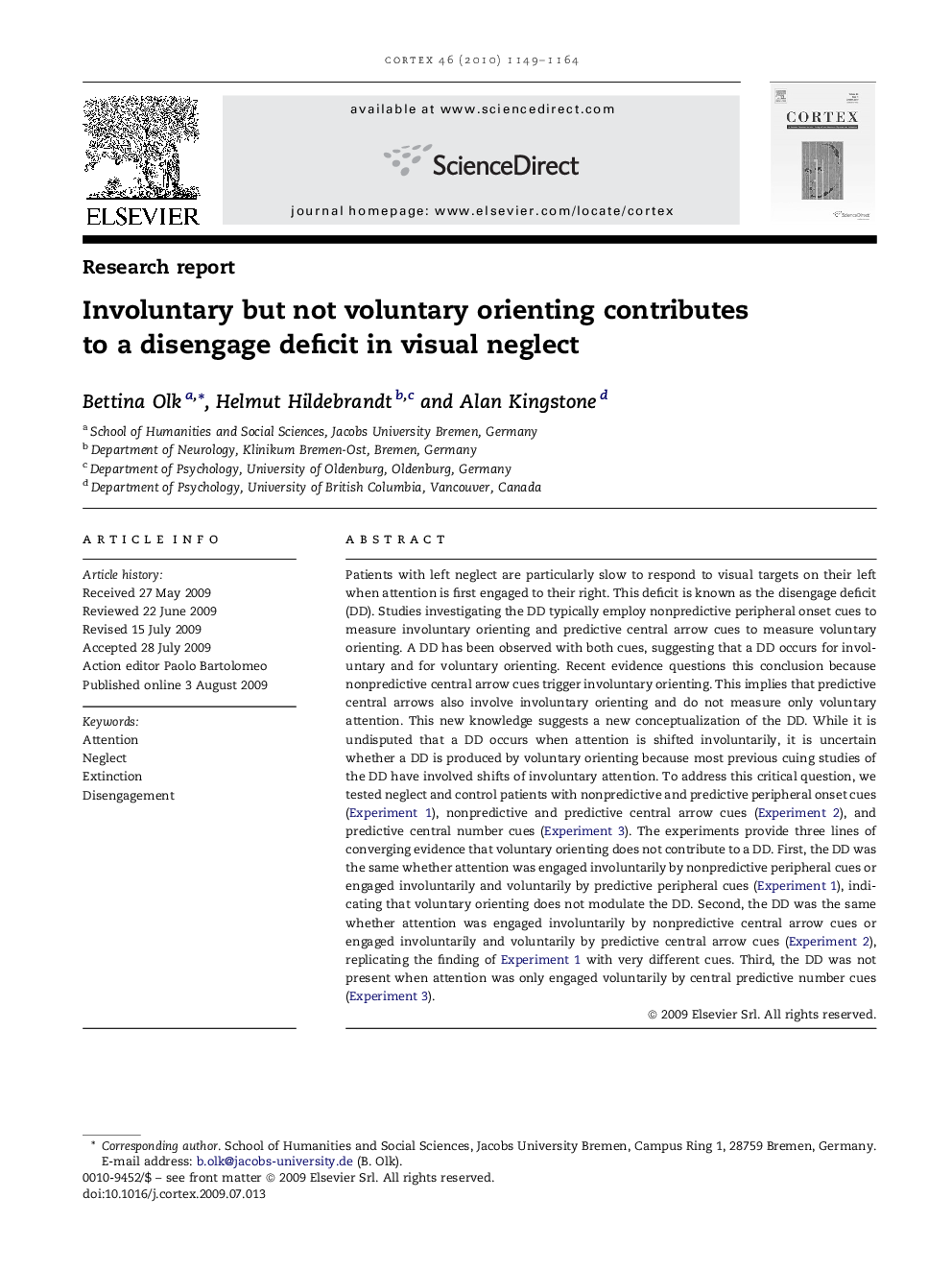| کد مقاله | کد نشریه | سال انتشار | مقاله انگلیسی | نسخه تمام متن |
|---|---|---|---|---|
| 942516 | 925137 | 2010 | 16 صفحه PDF | دانلود رایگان |

Patients with left neglect are particularly slow to respond to visual targets on their left when attention is first engaged to their right. This deficit is known as the disengage deficit (DD). Studies investigating the DD typically employ nonpredictive peripheral onset cues to measure involuntary orienting and predictive central arrow cues to measure voluntary orienting. A DD has been observed with both cues, suggesting that a DD occurs for involuntary and for voluntary orienting. Recent evidence questions this conclusion because nonpredictive central arrow cues trigger involuntary orienting. This implies that predictive central arrows also involve involuntary orienting and do not measure only voluntary attention. This new knowledge suggests a new conceptualization of the DD. While it is undisputed that a DD occurs when attention is shifted involuntarily, it is uncertain whether a DD is produced by voluntary orienting because most previous cuing studies of the DD have involved shifts of involuntary attention. To address this critical question, we tested neglect and control patients with nonpredictive and predictive peripheral onset cues (Experiment 1), nonpredictive and predictive central arrow cues (Experiment 2), and predictive central number cues (Experiment 3). The experiments provide three lines of converging evidence that voluntary orienting does not contribute to a DD. First, the DD was the same whether attention was engaged involuntarily by nonpredictive peripheral cues or engaged involuntarily and voluntarily by predictive peripheral cues (Experiment 1), indicating that voluntary orienting does not modulate the DD. Second, the DD was the same whether attention was engaged involuntarily by nonpredictive central arrow cues or engaged involuntarily and voluntarily by predictive central arrow cues (Experiment 2), replicating the finding of Experiment 1 with very different cues. Third, the DD was not present when attention was only engaged voluntarily by central predictive number cues (Experiment 3).
Journal: Cortex - Volume 46, Issue 9, October 2010, Pages 1149–1164